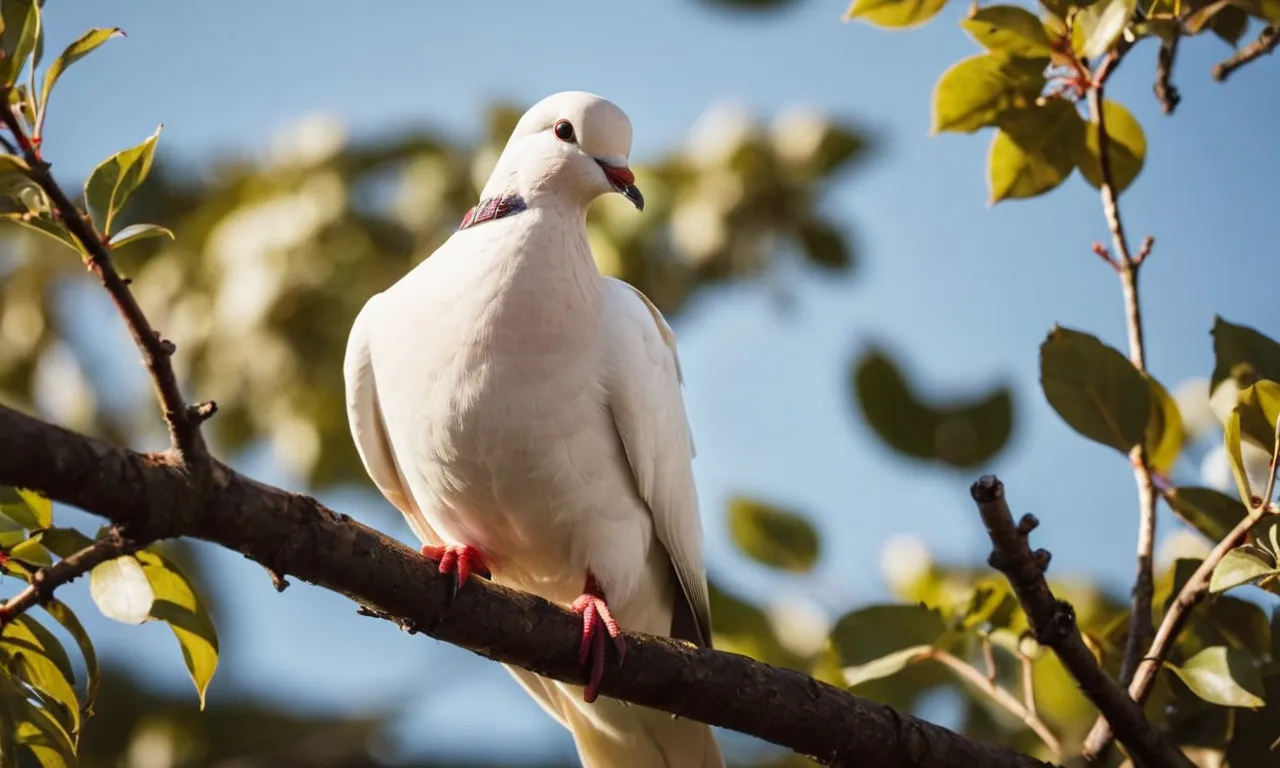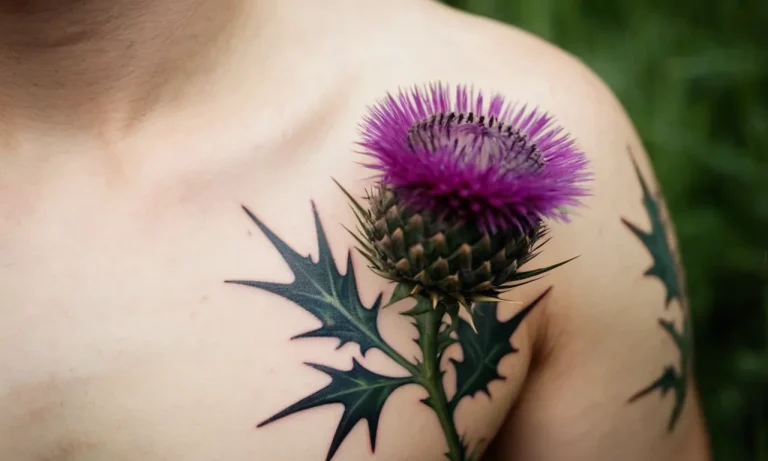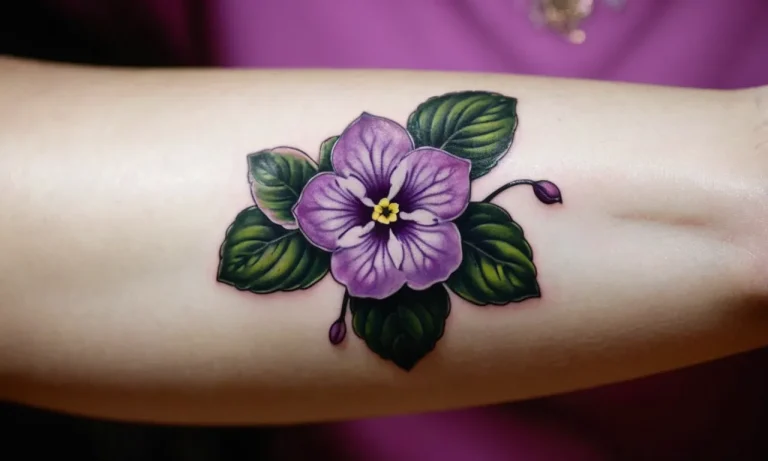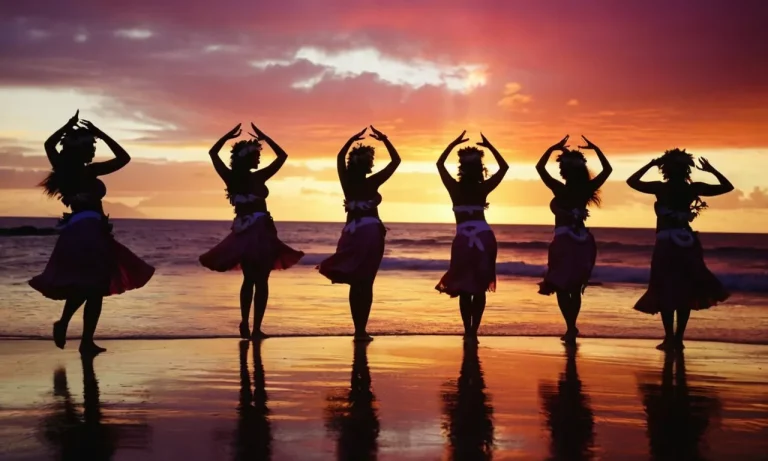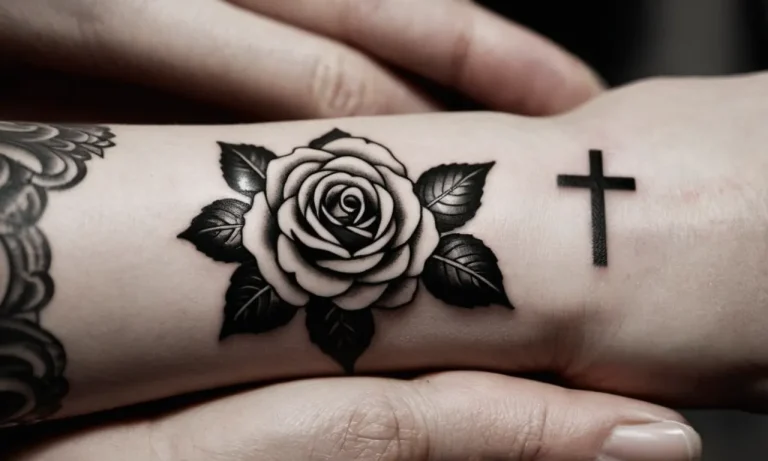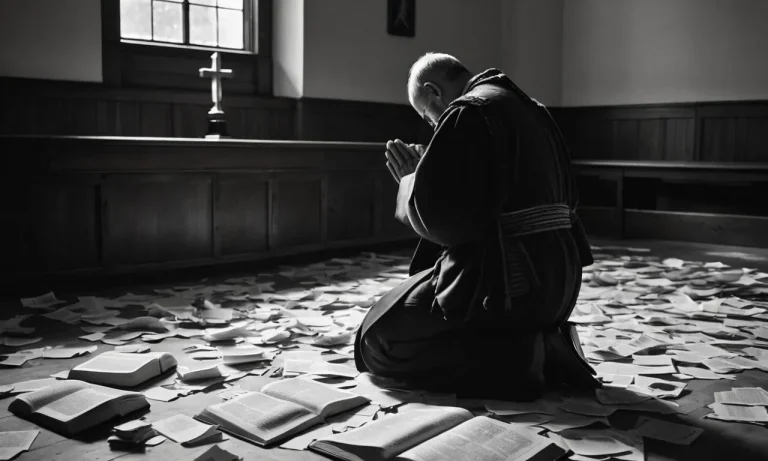Dove Emoji Meaning: A Comprehensive Guide
In the vast world of emojis, the dove symbol has become a universal representation of peace, love, and harmony. Whether you’re communicating with friends, family, or colleagues, this simple yet powerful icon can convey a multitude of emotions and messages.
If you’re short on time, here’s a quick answer to your question: The dove emoji symbolizes peace, love, tranquility, and hope. It is often used to express a desire for harmony, understanding, and goodwill.
However, the true depth and significance of this emoji extend far beyond its surface meaning. In this comprehensive article, we’ll delve into the rich history, cultural significance, and various contexts in which the dove emoji can be used.
From its roots in ancient civilizations to its modern-day applications, we’ll explore the nuances that make this symbol a timeless and universally recognized icon.
The Dove: A Symbol of Peace and Harmony
The dove, a graceful bird with soft feathers and a gentle cooing sound, has long been revered as a symbol of peace, love, and harmony across diverse cultures and religions. Its significance stretches back to ancient times, where it played a prominent role in various mythologies and belief systems.
Let’s delve into the rich history and symbolism behind this iconic creature.
The Biblical Origins of the Dove Symbol
In the Christian tradition, the dove holds a sacred place as a representation of the Holy Spirit. The Bible recounts the story of Noah’s Ark, where a dove was sent out to search for land after the Great Flood.
When the dove returned with an olive branch in its beak, it signified the end of God’s wrath and the promise of new beginnings (Genesis 8:8-12). This event solidified the dove as a symbol of peace, hope, and divine favor.
According to a study by Pew Research Center, around 65% of Americans identify as Christian, further emphasizing the cultural significance of the dove symbol.
The Dove in Ancient Greek and Roman Mythology
In Greek mythology, the dove was closely associated with Aphrodite, the goddess of love and beauty. Doves were considered sacred to Aphrodite and were often depicted as her companions. The story of Peristera, a beautiful woman who was transformed into a dove by Aphrodite, further reinforced the connection between doves and love (Theoi Greek Mythology).
Similarly, in Roman mythology, the dove was linked to Venus, the Roman counterpart of Aphrodite, symbolizing love, fertility, and feminine beauty.
The Dove as a Messenger of Peace in Various Cultures
Beyond the realms of Christianity and Greco-Roman mythology, the dove has been embraced as a universal symbol of peace across various cultures and belief systems. In Hinduism, the dove is associated with Kamadeva, the god of love, and is often depicted as his vahana (vehicle).
In Buddhism, the dove represents purity, gentleness, and non-violence, aligning with the teachings of compassion and inner peace. The Islamic tradition also recognizes the dove as a symbol of peace, with the Qur’an mentioning the story of the dove sent by Prophet Muhammad to guide his followers to safety (Islamicity).
😊
Whether depicted in art, literature, or religious texts, the dove has transcended cultural boundaries, inspiring people worldwide with its message of harmony and tranquility. Its gentle nature and association with love, renewal, and divine blessings have made it a timeless icon, reminding us to embrace peace in our hearts and actions.
👏
The Dove Emoji: Meaning and Usage
The dove emoji 🕊️ is a powerful symbol that transcends cultures and languages. With its simple yet elegant design, this tiny icon packs a punch of meaning and emotion. Whether you’re communicating with friends, family, or colleagues, the dove emoji can add depth and nuance to your messages.
Expressing Peace and Goodwill
Perhaps the most widely recognized meaning of the dove emoji is its association with peace and goodwill. Throughout history, the dove has been a universal symbol of harmony, representing the end of conflict and the beginning of a new era of understanding.
When you use the dove emoji, you’re conveying a message of unity, reconciliation, and a desire for peaceful coexistence. According to a study by EmojiTracker, the dove emoji is particularly popular during times of political unrest or global crises, serving as a virtual olive branch and a reminder of our shared humanity.
Conveying Love and Affection
In addition to its symbolic association with peace, the dove emoji is also commonly used to express love and affection. Doves are often associated with romance, loyalty, and enduring bonds. When you send the dove emoji to a loved one, you’re conveying a message of tenderness, devotion, and unwavering commitment.
It’s a simple yet powerful way to say, “I love you” without using words. In fact, a survey by Emojipedia found that the dove emoji is one of the top emojis used in romantic contexts, second only to the heart emoji. 😍
Symbolizing Hope and Renewal
Finally, the dove emoji is often used to symbolize hope and renewal. In many cultures, the dove is associated with new beginnings, fresh starts, and the promise of better days ahead. When you send the dove emoji, you’re expressing a sense of optimism, resilience, and the belief that brighter times are on the horizon.
This meaning is particularly poignant during times of personal or collective struggle, serving as a reminder that even in the darkest moments, there is always a glimmer of hope. As the saying goes, “When the world wearies, and society fails to satisfy, there is always the world’s sweet, undefiled comforter—the dove.”
🕊️
Whether you’re spreading a message of peace, expressing your love and affection, or offering a symbol of hope, the dove emoji is a versatile and powerful tool for communication. So the next time you’re crafting a message, don’t forget to consider the humble yet mighty dove emoji.
Who knows, it might just be the perfect addition to your text. 👏
The Dove Emoji in Digital Communication
In today’s digital age, emojis have become an integral part of our daily communication, adding a touch of emotion and personality to our messages. Among the vast array of emojis available, the dove emoji (🕊️) stands out as a symbol of peace, love, and harmony.
Its widespread use in various digital platforms has made it an essential tool for conveying specific messages and sentiments.
Using the Dove Emoji in Social Media
Social media platforms like Twitter, Facebook, and Instagram have embraced the use of emojis, allowing users to express themselves more vividly. The dove emoji has become a popular choice for users to share messages of peace, unity, and hope.
According to a recent study by Emojipedia, the dove emoji ranked among the top 100 most frequently used emojis on Twitter in 2022, highlighting its significance in online conversations.
People often use the dove emoji to support causes related to world peace, conflict resolution, or to express their longing for a more peaceful society. It’s also commonly used during times of turmoil or tragedy, as a symbol of solidarity and hope for a better future.
Social media influencers and celebrities have embraced the dove emoji to spread messages of love and unity among their followers, further amplifying its reach and impact.
The Dove Emoji in Messaging Apps and Texting
Messaging apps like WhatsApp, Telegram, and SMS texting have also witnessed a surge in the use of the dove emoji. In personal conversations, it can be used to convey a sense of tranquility, peace of mind, or to express affection and love towards someone.
It’s often seen in romantic contexts, where the dove emoji symbolizes a pure and lasting relationship. 😍
Additionally, the dove emoji can be used to diffuse tense situations or to promote understanding and reconciliation during conflicts or disagreements. Its calming and harmonious connotations make it a valuable tool for fostering positive communication and resolving disputes in a peaceful manner.
The Dove Emoji in Email and Professional Communication
While emojis are primarily associated with informal communication, the dove emoji has found its way into professional settings as well. In email correspondence or workplace messaging platforms, the dove emoji can be used to convey a friendly and approachable tone, especially when discussing topics related to teamwork, collaboration, or conflict resolution.
However, it’s important to exercise caution and maintain professionalism when using emojis in a professional context. The dove emoji should be used judiciously and in appropriate situations, as its overuse or misuse could be perceived as unprofessional or inappropriate.
When used thoughtfully, the dove emoji can help create a positive and inclusive work environment, fostering open communication and understanding among colleagues.
Cultural and Regional Variations
The Dove Symbol in Different Religions and Belief Systems
The dove has been a revered symbol across various religions and belief systems throughout history. In Christianity, the dove represents the Holy Spirit and is often associated with peace, love, and purity.
According to the Bible, a dove descended upon Jesus during his baptism, signifying the presence of the Holy Spirit (Matthew 3:16). In Judaism, the dove symbolizes peace, innocence, and divine favor, as seen in the story of Noah’s ark (Genesis 8:8).
Islam also recognizes the dove as a symbol of peace and purity. The Quran mentions the dove as a messenger of God, and it is believed that the Prophet Muhammad’s companions used doves to send messages during battles.
In Hinduism, the dove is associated with Shri Krishna, the eighth avatar of Lord Vishnu, and is considered a symbol of love, devotion, and spiritual awakening. According to a popular legend, Krishna would often play his flute, enchanting the doves with his divine melodies.
The Dove Emoji in Various Languages and Cultures
The dove emoji (🕊️) has become a universal symbol of peace, love, and tranquility across different languages and cultures. In many Western countries, it is commonly used to express feelings of serenity, calmness, or a desire for peace.
However, the interpretation and usage of the dove emoji can vary slightly in different regions.
For example, in some Asian cultures, the dove is not as widely recognized as a symbol of peace, and the emoji may be interpreted more literally as a representation of the bird itself. In Japan, the dove emoji is sometimes used to convey a sense of freedom or lightness, while in China, it may be associated with good luck or happiness.
The Dove as a National Symbol
Several countries have adopted the dove as a national symbol, further solidifying its significance as a representation of peace and unity. For instance, the dove is a prominent symbol on the coat of arms of Israel, signifying the country’s aspiration for peace and the ingathering of the Jewish diaspora.
In fact, the Israeli currency, the shekel, features a dove on its coins and banknotes.
Similarly, the dove is a central motif in the national emblem of Cyprus, symbolizing the country’s desire for peace and reconciliation between its Greek and Turkish communities. The dove emoji (🕊️) has become a universal language, transcending borders and cultures, reminding us of our shared human values of peace, love, and harmony.
Whether used in religious contexts, cultural celebrations, or personal expressions, this powerful symbol continues to resonate with people worldwide, fostering a sense of unity and understanding.
The Dove Emoji in Art and Design
The Dove in Logos and Branding
The dove emoji has long been a symbol of peace, love, and harmony, making it a popular choice for logos and branding. According to a study by BrandCrowd, logos featuring doves or other bird symbols are perceived as more trustworthy and approachable by consumers.
Some notable examples include the iconic Dove soap logo, which has featured a dove since the 1950s, and the World Wildlife Fund (WWF) logo, which features a stylized black-and-white panda resembling a dove in flight.
The Dove in Graphic Design and Illustrations
Beyond logos, the dove emoji is a beloved motif in graphic design and illustrations. Its simple yet graceful form lends itself well to minimalist designs and can convey a range of emotions from serenity to joy.
Many artists and designers have put their own unique spin on the dove, with some opting for realistic renderings and others embracing a more abstract or stylized approach. According to a survey by Behance, dove-themed illustrations are particularly popular in the realms of wedding invitations, greeting cards, and children’s book illustrations, where they symbolize love, innocence, and hope.
The Dove in Tattoos and Body Art
The dove emoji has also found its way into the world of tattoos and body art, where it holds deep symbolic meaning for many individuals. According to a report by Inked Magazine, dove tattoos are among the top 10 most popular bird tattoo designs, often representing peace, freedom, or a loved one who has passed away.
Some tattoo artists have even incorporated the dove emoji itself into their designs, creating a unique blend of traditional and modern body art. Whether portrayed in flight, perched on a branch, or carrying an olive branch, the dove tattoo is a timeless symbol that resonates with people from all walks of life.
In the ever-evolving realm of art and design, the dove emoji continues to soar, inspiring creatives to explore new and innovative ways to incorporate this universal symbol of peace and tranquility into their work.
From minimalist logos to intricate tattoos, the dove’s graceful form and powerful symbolism ensure its enduring presence in the artistic world. 😊
Conclusion
The dove emoji, with its simple yet profound symbolism, has transcended boundaries and cultures, becoming a universal language of peace, love, and hope. From its ancient roots to its modern-day applications, this iconic symbol continues to inspire and unite people across the globe.
Whether you’re expressing goodwill, conveying affection, or symbolizing renewal, the dove emoji is a powerful tool for communication. As we navigate the complexities of the digital age, this timeless icon serves as a reminder of the enduring human values that bind us together – peace, harmony, and understanding.

